Written by: Emma Cyrus, Senior Copy, Content & Editorial Writer
Reviewed by: Benjamin Ibanez, General Manager & Interior Designer at FCI
Edited by: Zoona Sikander, Interior Design Writer & Social Media Content Creator
In the realm of interior design, the transformation of space through thoughtful window treatments remains one of the most impactful yet often overlooked elements. The right luxury curtains and blinds can dramatically alter perception, turning even the most modest rooms into airy, expansive sanctuaries. For residences in Dubai, where the interplay between indoor luxury and the brilliant outdoor light creates unique design opportunities, selecting the appropriate curtain designs becomes particularly significant.
The Illusion of Height and Space: Vertical Design Principles
The fundamental principle in creating a sense of openness begins with drawing the eye upward. When selecting window curtain design elements, consider these sophisticated approaches:
Floor-to-Ceiling Installation
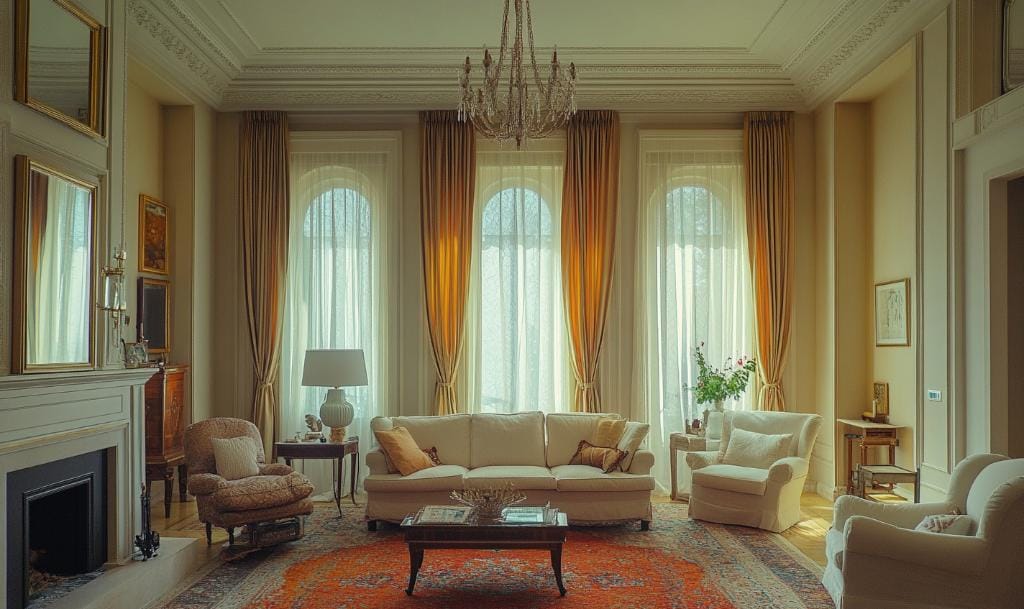
Installing curtains significantly higher than the window frame – ideally from ceiling to floor – creates an immediate impression of height. This technique elongates walls and establishes a sense of grandeur that complements Dubai’s architectural aesthetic. The continuous vertical line remains unbroken, allowing the eye to travel the full height of the room without interruption.
For penthouses and luxury apartments with standard ceiling heights, this approach proves particularly transformative. The curtain fabrics should hang precisely to floor level; neither pooling excessively, which can appear untidy, nor hovering above the floor, which visually shortens the space.
Vertical Patterns and Textures
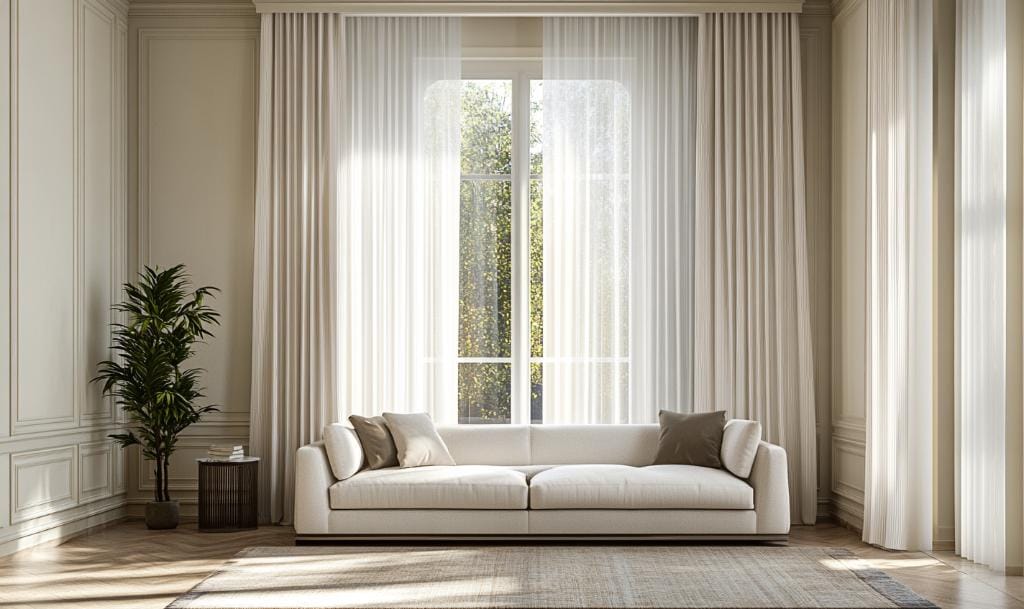
When space enhancement is the priority, vertical patterns or subtle textural variations in curtain fabrics create natural directional cues. Fine pinstripes, delicate waterfall patterns, or ombré effects that graduate from light to dark encourage upward visual movement.
These vertical elements needn’t be bold or dominant indeed, subtlety often proves more effective. A sheer fabric with barely perceptible vertical detailing can direct the eye without overwhelming the space’s overall design harmony.
Light Management: Transparency and Layering
Dubai’s abundant natural light presents both opportunity and challenge. Managing this intense illumination through strategic window treatments allows one to harness its space-enhancing properties.
Sheer Elegance
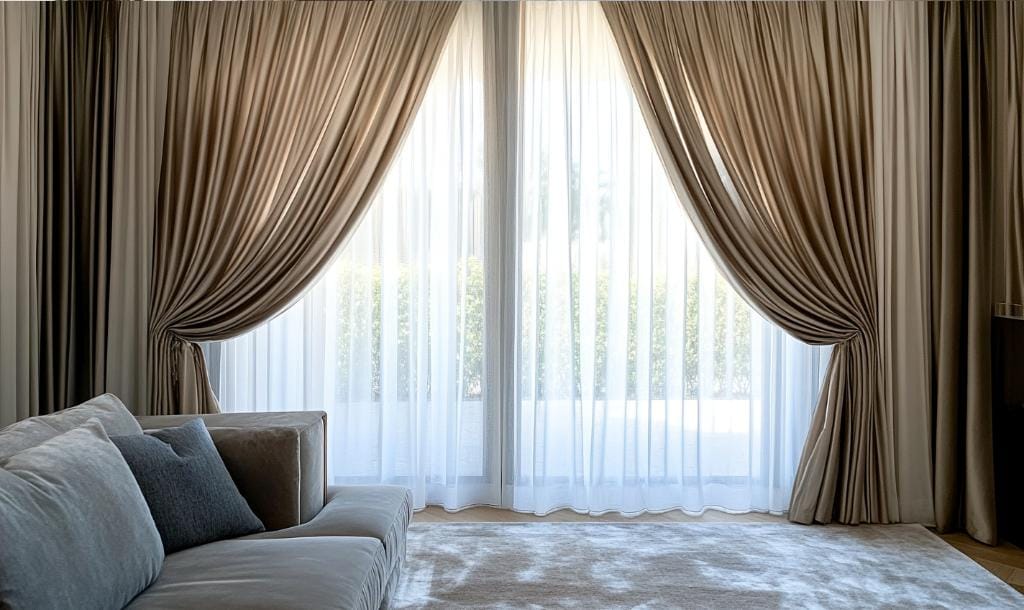
Perhaps no curtain design element contributes more effectively to spatial openness than the thoughtful use of sheer fabrics. These diaphanous materials diffuse harsh direct sunlight into a gentle luminosity that permeates the room, dissolving the boundary between indoors and outdoors.
Contemporary modern curtain designs often feature ultra-fine sheers in neutral tones that appear to dissolve in bright light. These create minimal visual obstruction while maintaining privacy – a particular consideration in Dubai’s high-rise residential environments.
Strategic Layering
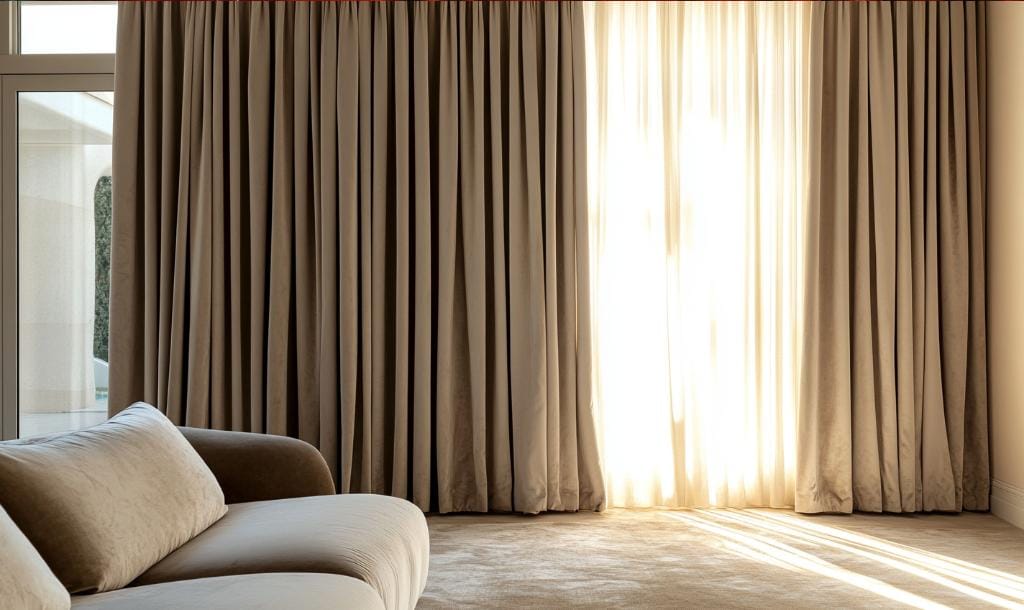
The sophisticated approach involves layering different curtain designs to achieve both aesthetic refinement and practical functionality. Consider pairing:
- Lightweight sheers that remain drawn during daylight hours, filtering light while maintaining views
- Heavier side panels in complementary tones that frame the window without encroaching on the glass area
- Concealed blinds that can provide complete darkness when required without adding visual weight to the window treatment
This layered approach allows for precise control over both light and privacy while maintaining the design integrity that sophisticated spaces demand.
Colour Theory and Spatial Perception
Colour selection in curtain fabrics significantly influences spatial perception and represents one of the most nuanced aspects of window treatment design.
The Receding Nature of Cool Tones
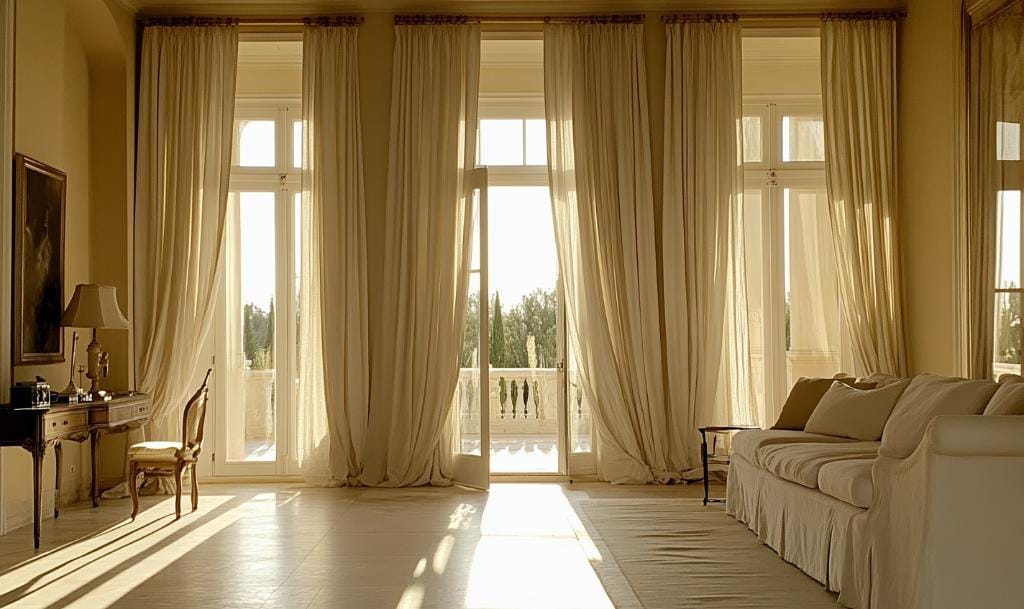
Pale blues, soft greens, and certain greys naturally recede visually, creating the perception that walls are farther away than their actual position. When selecting curtain fabrics, these tones can subtly expand the perceived dimensions of a room.
For Dubai residences with views of water features or the sea, cool-toned curtains create a harmonious transition between interior and exterior views. The curtains seem to merge with the horizon, visually extending the interior space.
Tonal Harmony
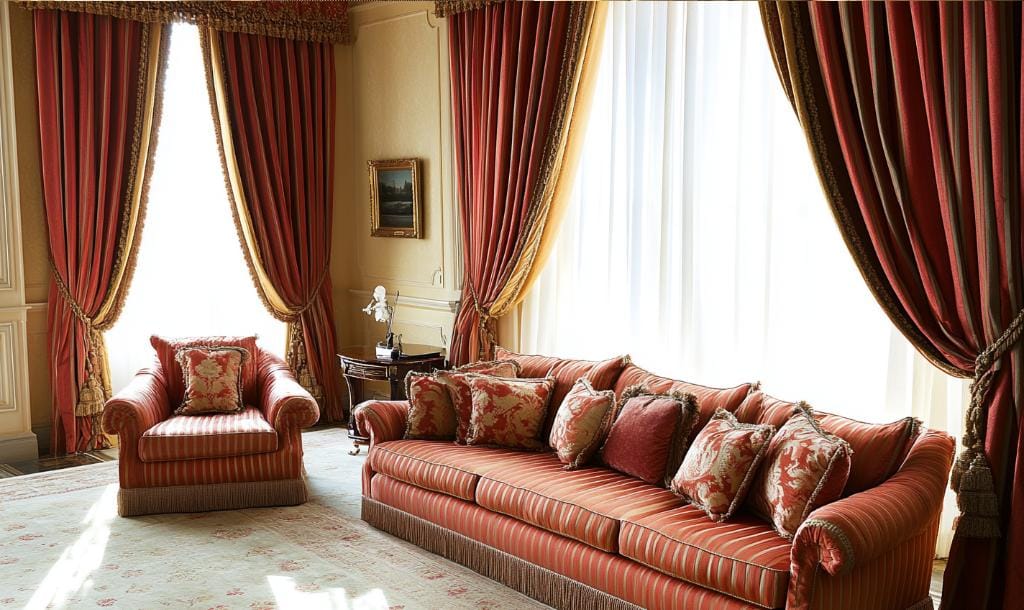
The most sophisticated modern curtain designs often employ fabrics in tones closely aligned with wall colours. This approach creates an uninterrupted visual plane that expands rather than segments the space. Consider curtains one or two shades lighter than wall colouring for a particularly refined effect.
This doesn’t necessitate blandness – textural variations and subtle patterns within the same colour family add depth without creating visual boundaries.
Hardware Considerations: Minimalism and Mounting
The mechanisms supporting your curtains and blinds contribute significantly to spatial perception, though they’re rarely given appropriate consideration.
Extended Rods and Tracks
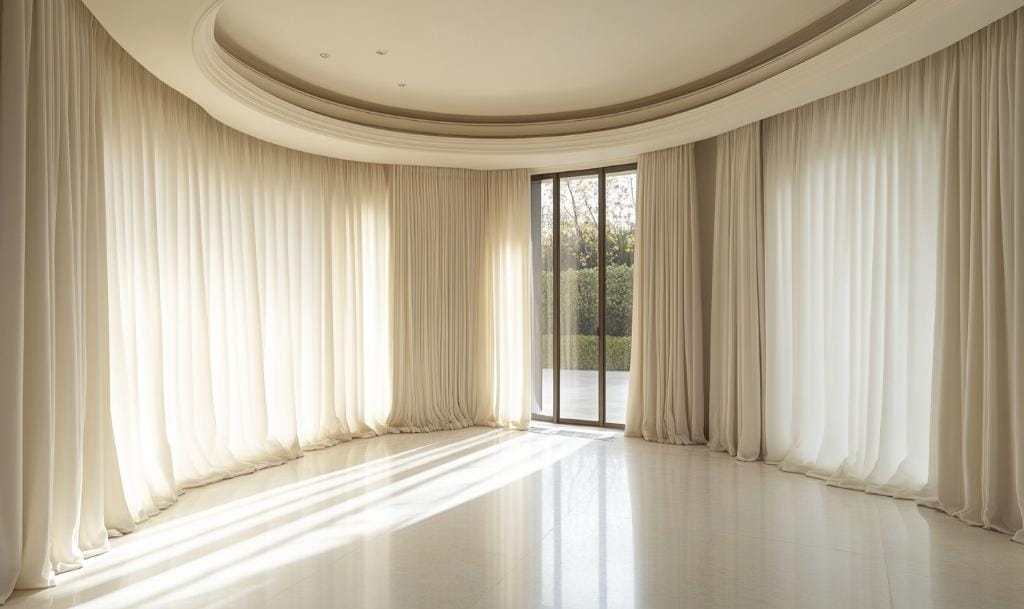
Extending curtain hardware 20-30 centimetres beyond the window frame on each side allows curtains to be drawn completely clear of the glass. This seemingly minor adjustment reveals the entire window, maximising both light and the view beyond – elements that inherently expand perceived space.
In Dubai’s contemporary luxury residences, where floor-to-ceiling windows often frame spectacular urban or coastal vistas, this technique proves particularly valuable.
Recessed Hardware
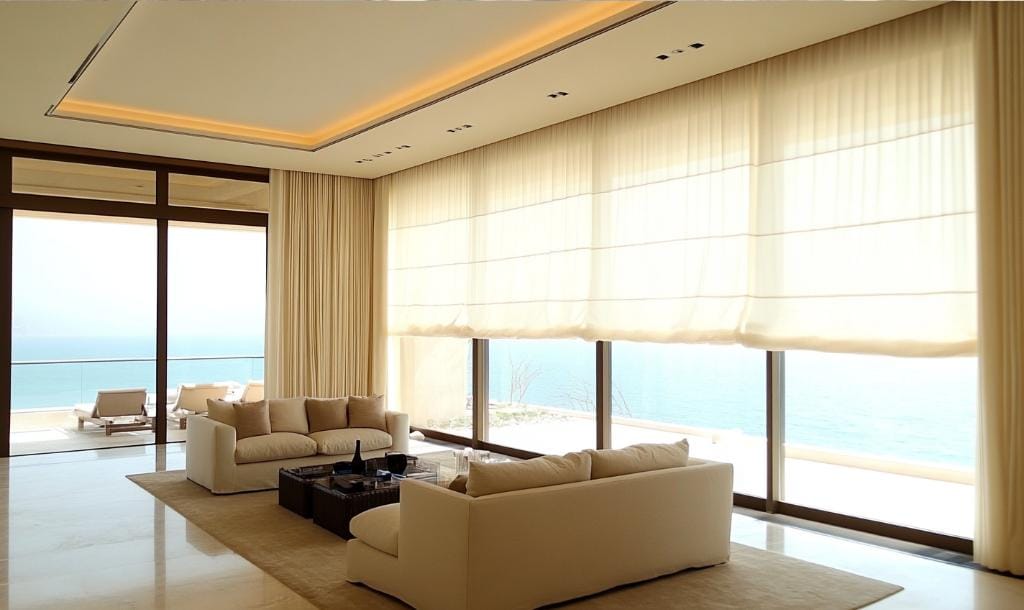
The most sophisticated contemporary curtain designs often feature completely concealed tracking systems. These recessed installations eliminate visual clutter entirely, creating the impression that fabrics simply emerge from the ceiling. While requiring more complex installation, the resulting clean lines contribute significantly to spatial openness.
Fabric Selection: Weight and Movement
The physical properties of curtain fabrics influence not just aesthetics but the dynamic quality of the space.
Lightweight Natural Fibres
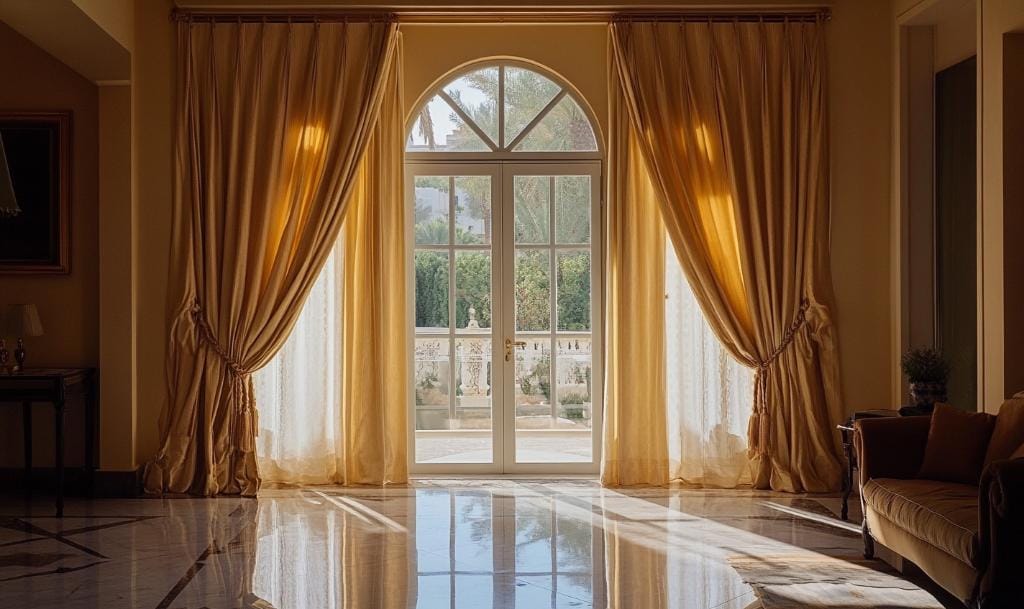
Natural silk, fine linen, and high-quality cotton blends move with air currents, creating subtle animation that expands spatial perception. This gentle movement adds a dynamic quality particularly suited to Dubai’s indoor-outdoor lifestyle, where the transition between climate-controlled interiors and balconies or terraces occurs frequently.
Flow and Drape
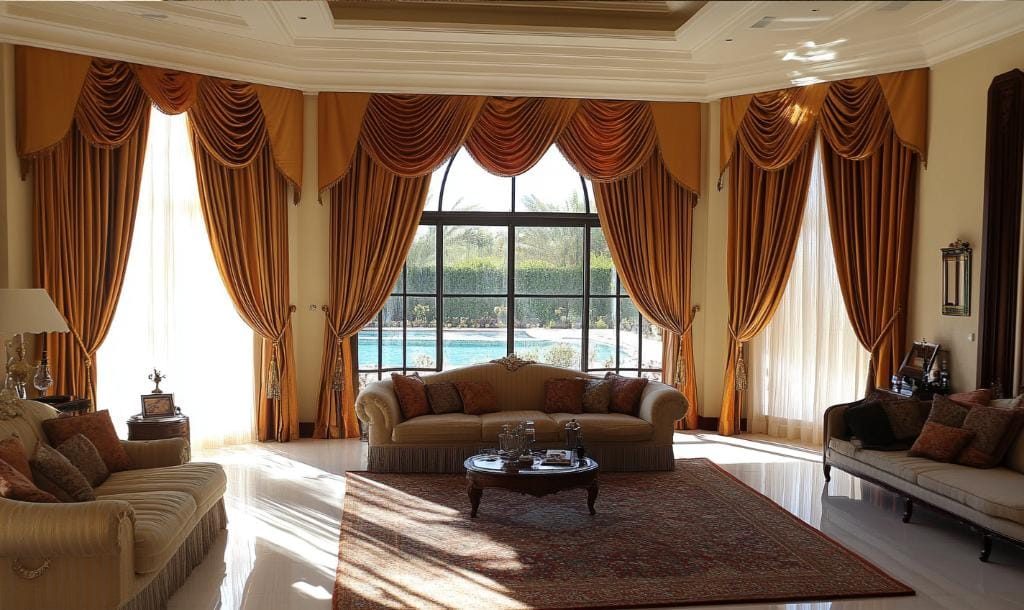
The way fabric hangs – its drape – significantly affects its space-enhancing properties. Curtains with fluid drape that fall in clean, vertical lines create less visual disruption than heavily structured fabrics. When selecting curtain designs, request large samples to assess how the material behaves when hung in substantial quantities.
Contemporary Approaches for Modern Spaces
For those with thoroughly contemporary aesthetics, several modern curtain designs offer particularly effective space-enhancement solutions.
Wave Fold Systems
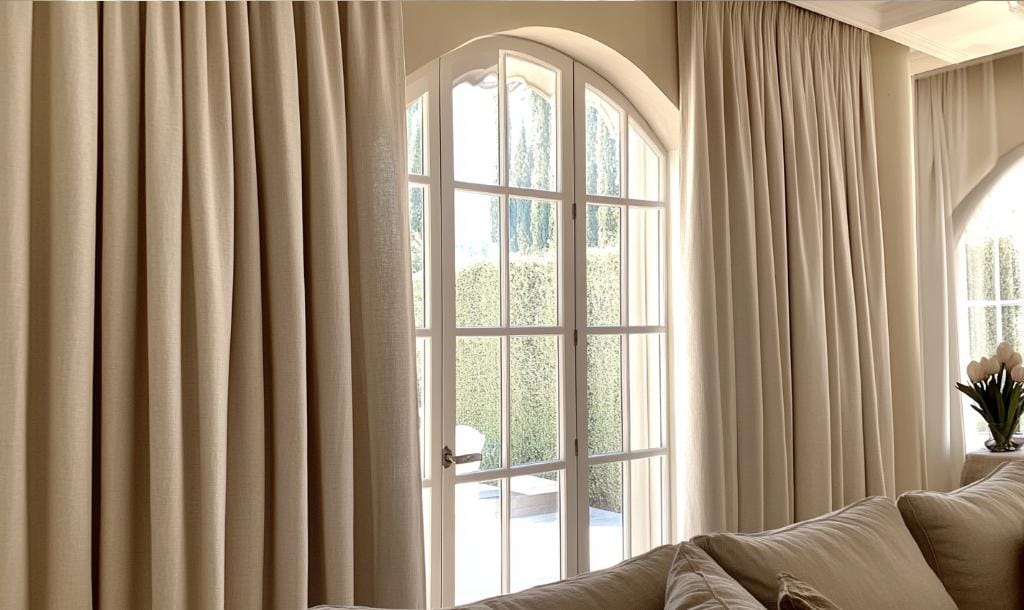
The wave or ripple fold curtain system creates uniform, evenly spaced curves that stack neatly when opened. This contemporary curtain design maintains a consistent profile whether open or closed, occupying minimal space and creating clean lines that complement modern architectural elements commonly found in Dubai’s premium residential developments.
Panel Systems
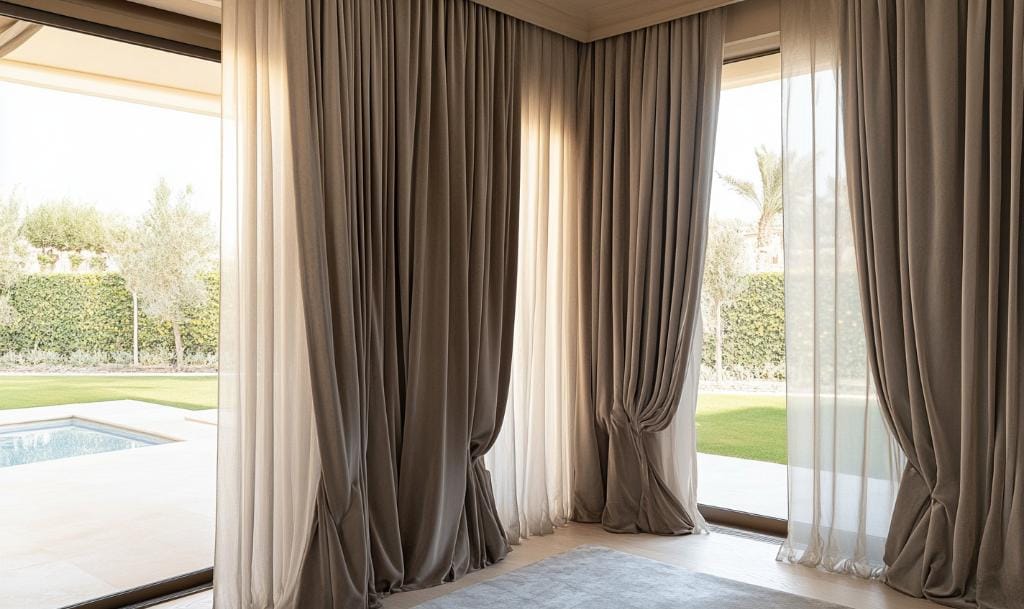
For expansive windows or sliding doors – architectural features common in Dubai’s luxury apartments – panel systems offer an elegant solution. These flat fabric panels slide horizontally on multiple tracks, allowing precise control over light and views while maintaining a minimal visual footprint.
Conclusion: The Bespoke Approach
While these principles provide direction, truly exceptional curtains and blinds require customisation to the specific architectural characteristics, lighting conditions, and aesthetic vision of each space. The most successful window treatments balance technical performance with design sensitivity—filtering Dubai’s brilliant light while complementing the sophisticated interiors that define the city’s most distinguished residences.
The curtain designs that most effectively create openness will always be those tailored precisely to the space they inhabit, not merely decorative afterthoughts, but integral architectural elements that shape perception, light, and ultimately, the experience of the space itself.



Get in touch
Want to get in touch? We'd love to hear from you. Email us at [email protected]
Sign Up for Newsletter